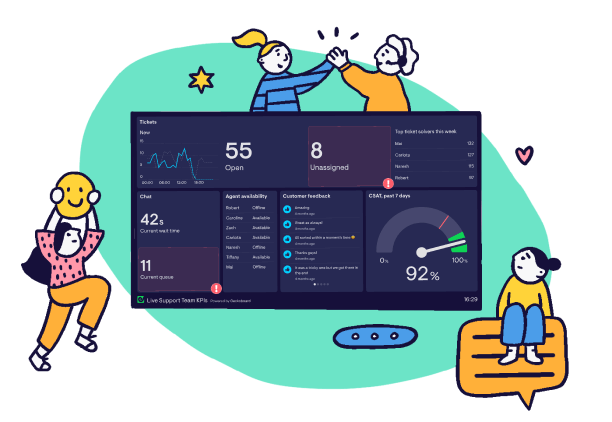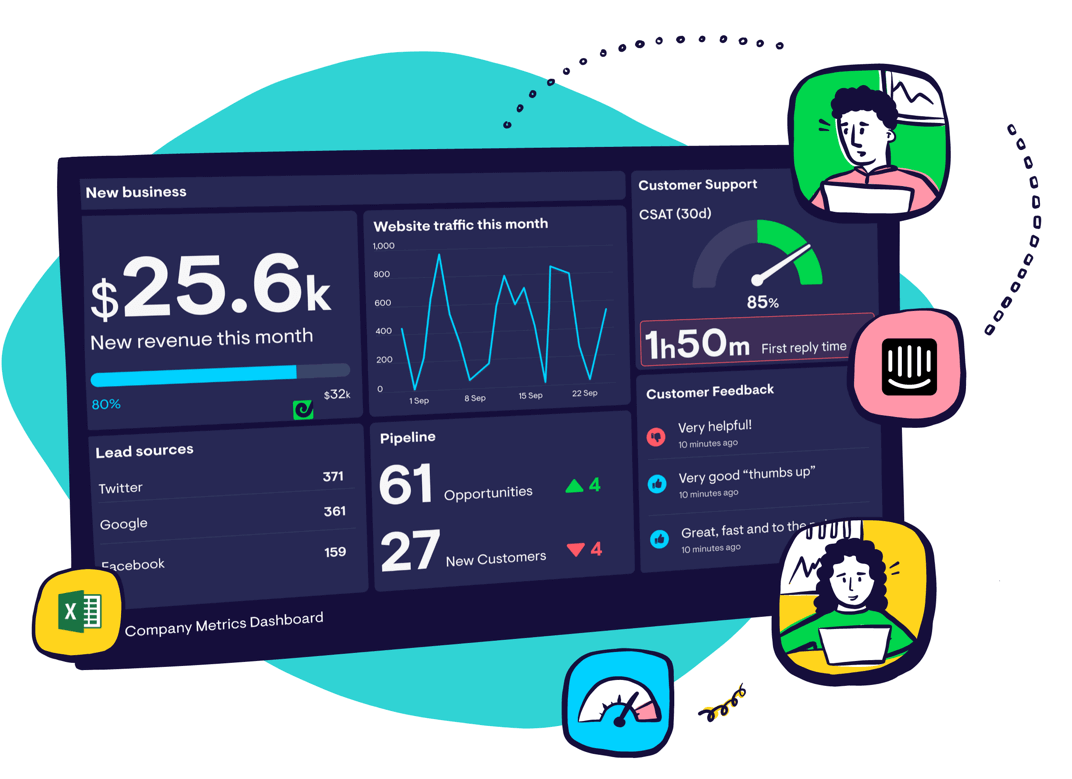Customer Effort Score (CES)
What is Customer Effort Score?
Customer Effort Score (CES) is a type of customer satisfaction survey that asks customers to rate the ease of using products or services. This is either presented by asking how they agree with a statement (“The company made it easy for me to solve my problem”, for example), asking a question (“How easy was it to solve your problem?” for instance) or rating their level of effort.
There are several types of CES surveys that differ in the way you calculate and score them. The Likert scale asks respondents to rate items on a level of agreement, typically on a 5- or 7-point scale ranging from “strongly disagree” to “strongly agree”. Likert scales are useful because they don’t expect a simple “agree” or “disagree” answer from the respondent, but rather allow for degrees of opinion, and even no opinion at all. Therefore quantitative data is obtained, which means that the data can be analysed with relative ease. However, it’s often the case that people avoid choosing the extreme “strongly…” options on the scale, even if an extreme choice would be the most accurate.
The numerical 1 to 10 scale asks respondents to answer a question in the 10-point range. For any numbered scale the type of question you ask will determine how lower or higher numbers are scored. For instance, if you’re asking customers how easy it was to solve their problem, 10 is good. Conversely, 1 is good if you’re asking customers how easy it was to solve their problem. The 1 to 10 scale offers greater variability when compared to 5- or 7-point Likert scales, particularly if you’re seeing the vast majority of respondents opting for the top or bottom ends of the 5- or 7-point scales. However, numerical scales can be highly ambiguous for respondents and so difficult to extract real meaning from the results.
Another popular scale uses happy, neutral and unhappy Emoticons to replace words or numbers in a 3-point scale. While eye-catching in their appearance, research has suggested that respondents to these types of survey spend less time reading the question and response options than respondents to the questions without emoticons.
How to calculate Customer Effort Score?
If you’re using the 10-point scale, take the total sum of your Customer Effort survey scores and divide it by the number of survey responses you received to calculate the average score. If you’re using the Likert scale you’ll need to substitute the response options with numbers.
Total Sum of Customer Effort Survey Scores / Number of Survey Responses = Customer Effort Score
If you’re using Emoticons or a simple Agree or Disagree scale, you can subtract the number of negative responses from the positive responses. The neutral responses can be ignored. This is similar to how Net Promoter Score (NPS) is calculated.
% “Happy” Customer Effort Survey responses / % “Unhappy” Customer Effort Survey responses = Customer Effort Score
Give your support team a boost
With Geckoboard’s real-time dashboards, everyone knows exactly what’s happening in CS right now.
Find out more
What do Customer Effort Scores tell you?
Implementing a Customer Effort Score survey can enable you to highlight which areas of your support operations need improvement, particularly when paired with your Customer Satisfaction (CSAT) score. If your CES is good and CSAT high it indicates that you’re making the experience convenient for customers. A worse CES score coupled with a lower CSAT suggests there’s room for improvement to make their experience easier.
However, it’s always worth seeing if the picture changes when you consider the different buying stages your customers are at. You might, for instance, notice that your good CES and higher CSAT only accounts for paying customers telling you that contacting you about billing issues was easy to do. Whereas, in fact, your trialists are finding it harder to do so. Paying customers are, on the whole, more likely to share their experience, while your struggling trialists are probably not going to give their time to tell you.
Your CES score also corresponds to the number of received tickets. If you’re making it too hard for customers to contact you then perhaps you might be receiving fewer tickets than you ought to be. Instances where you might refer customers to your Help Center first before contacting you might seem like you’re putting up a barrier. Are they choosing to use that channel to look for their answer, or is that the point that they give up?
With no clear industry standard to compare against, performing a CES benchmark against competitors is difficult. Also, whether or not your CES is a good one depends on your question and the metrics you use.
Should you track Customer Effort Score?
Your Customer Effort score is a key health metric because it can shed light on how effective your support experience is. Are your customers able to get the help they need from the different support channels you offer and is clear which offers them the fastest solution for their context? They do, however, rely on customers taking the time to respond. You have to factor in that some customers, for many different reasons, won’t respond.
Also, Customer Effort Score surveys can tell you a customer had difficulty solving a problem, but, like your NPS and CSAT, they can’t always tell you why. You always have to try to close the feedback loop and follow up with your customers to better understand how and where you can make improvements.
